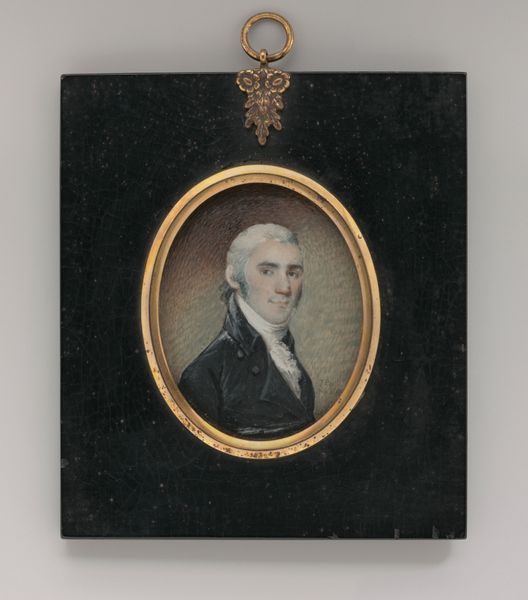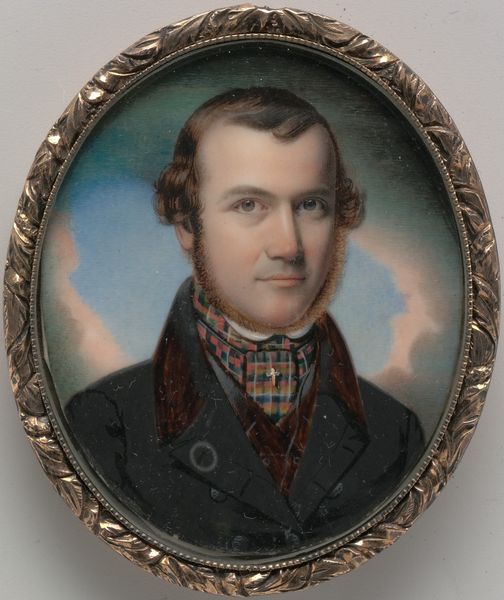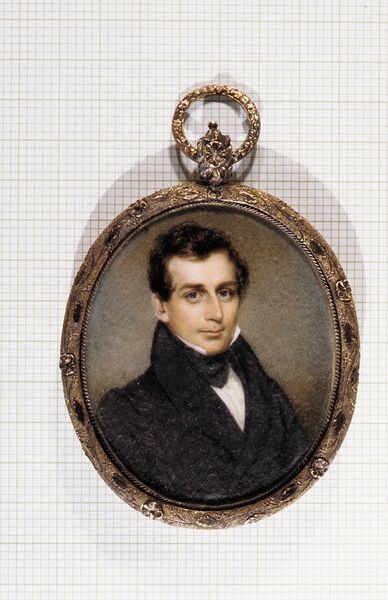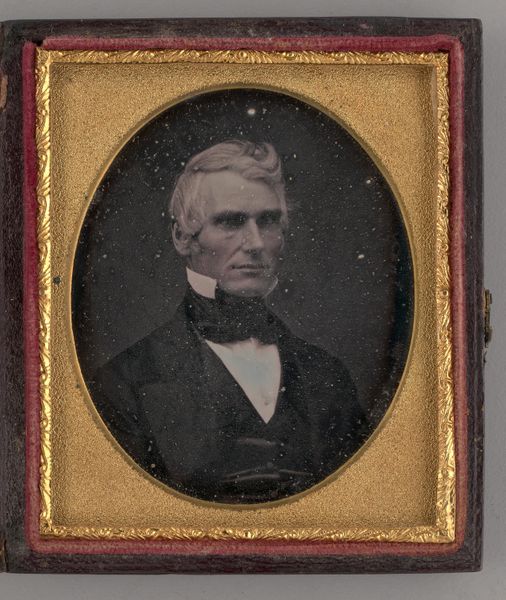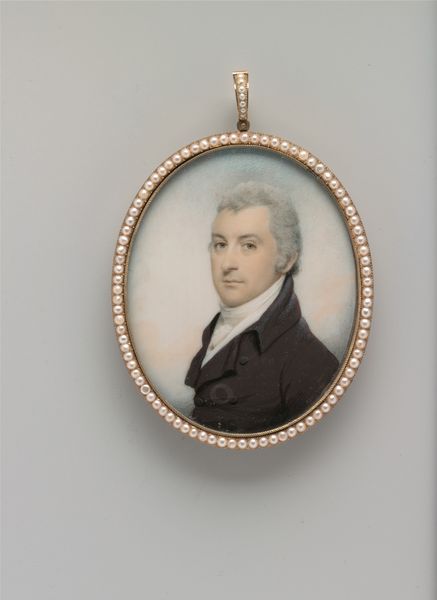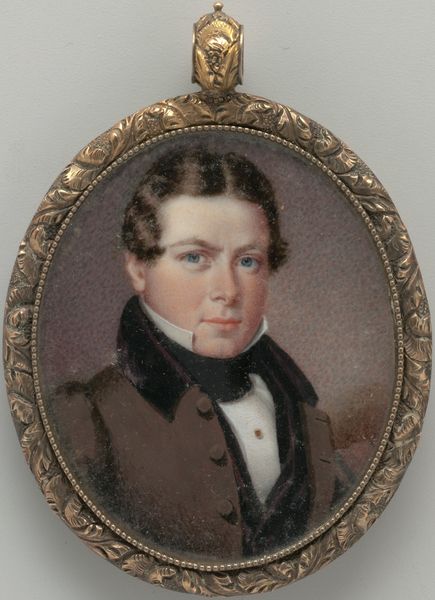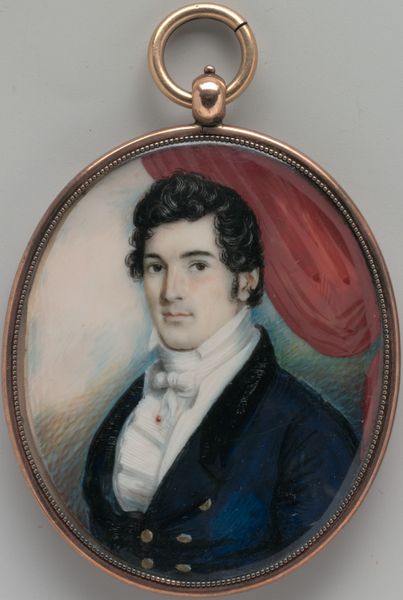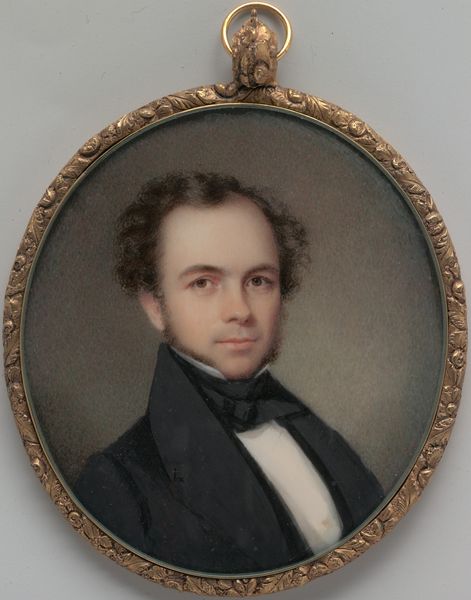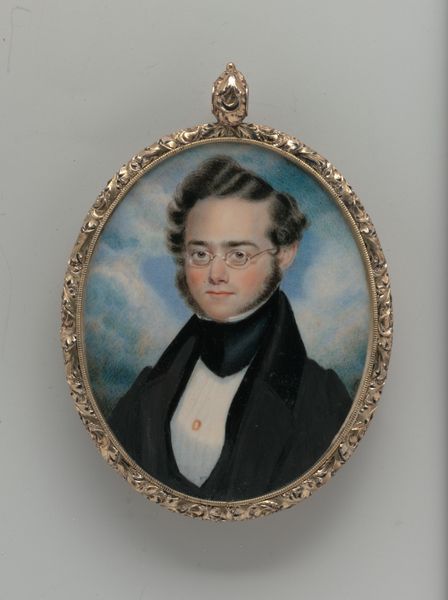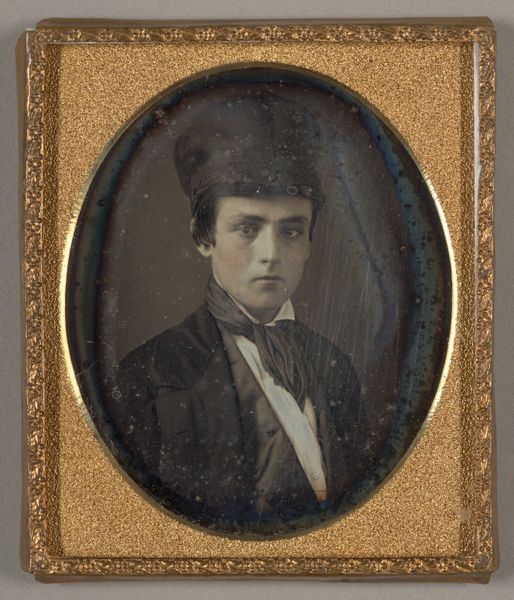
painting, oil-paint
#
portrait
#
painting
#
oil-paint
#
romanticism
#
men
#
history-painting
#
academic-art
#
portrait art
Dimensions: 4 × 3 1/8 in. (10.2 × 7.9 cm)
Copyright: Public Domain
Editor: This is a portrait miniature of Amos Binney, painted between 1835 and 1845. It's oil on ivory, and housed here at the Metropolitan Museum of Art. I'm struck by how small and intimate it feels. What do you see in this piece beyond its immediate visual appeal? Curator: Beyond the captivating precision of the portrait, I see a potent symbol of 19th-century societal structures and the construction of masculinity. Think about who was commissioned for and consumed portrait miniatures, and what purpose these objects served within wealthy networks of the time. How does that impact our viewing experience? Editor: So, it’s less about individual likeness and more about the social role the portrait played? Curator: Precisely. Binney, from what I know, was a figure of considerable privilege and power. But think about what a portrait like this says about the owner's perception of gender, class, and social standing in the antebellum period. Consider this within the context of the inequalities of the time. What are we not seeing? Editor: That's a great point. We are looking at a privileged man but what about the absence of women and working-class people in similar artworks? Curator: Absolutely! Whose stories are privileged and whose are erased through artistic representation is always critical to examine. Does considering this change how you initially perceived the intimacy of the piece? Editor: Yes, completely. It makes me think about the power dynamics inherent in portraiture of the time and the narratives that get perpetuated. It’s more unsettling now. Curator: And it prompts us to question whose stories are memorialized and why. By considering these works within broader intersectional narratives, we can critically engage with the art historical canon. Editor: Thank you, I learned a lot, considering this perspective gave a completely new understanding of portraiture. Curator: Indeed. It is important to see art in dialogue with contemporary perspectives to gain deeper insight into culture and society.
Comments
No comments
Be the first to comment and join the conversation on the ultimate creative platform.
